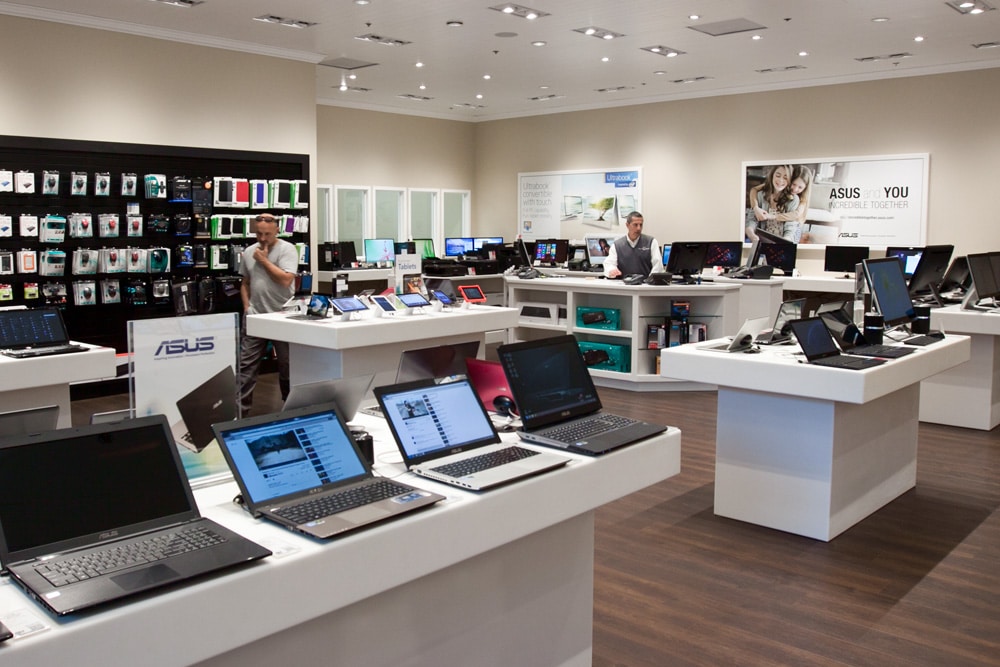SWOT Analysis for a Computer Hardware Store (Example)

A SWOT analysis is crucial for developing a business plan for a computer hardware store. This analysis, which stands for Strengths, Weaknesses, Opportunities, and Threats, helps in understanding both internal and external factors that can impact your business. Strengths and weaknesses are internal to the business, while opportunities and threats are external.
In this article, we will explore various examples of strengths, weaknesses, opportunities, and threats, aiding store owners in incorporating these insights into their business strategies.
Strengths
Highlight strengths that distinguish the computer hardware store, fostering customer satisfaction and loyalty.
- Diverse Product Range and Quality Brands: Offering a wide array of hardware components and peripherals from reputable brands establishes credibility and customer trust.
- Example: Emphasize exclusive partnerships or certifications with renowned brands to showcase quality assurance and reliability.
- Technical Expertise and Customer Support: Providing expert advice, technical assistance, and reliable after-sales support enhances the shopping experience.
- Example: Train staff with technical expertise, offer online tutorials, and provide responsive customer service for troubleshooting queries.
- Strategic Location and Accessibility: A prime location with high visibility and accessibility contributes to increased foot traffic and customer convenience.
- Example: Leverage the store’s location in marketing materials, highlighting easy access and proximity to tech hubs or educational institutions.
- Online Presence and E-commerce Platform: Maintaining a robust online store facilitates wider market reach and convenience for tech-savvy customers.
- Example: Optimize the website for user-friendliness, provide detailed product descriptions, and offer secure online transactions for seamless shopping.
Weaknesses
Address weaknesses to fortify the computer hardware store’s market position and operational efficiency.
- Inventory Management and Stock Variability: Managing diverse inventory and stock fluctuations may lead to shortages or excesses of certain components.
- Example: Implement inventory tracking systems and real-time monitoring to mitigate stock-related issues and optimize ordering.
- Pricing and Competing with Online Retailers: Competing on price with online retailers might affect profit margins and customer retention.
- Example: Emphasize value-added services, expertise, and customer relationships to justify competitive pricing.
- Rapid Technological Obsolescence: Keeping pace with rapidly evolving technologies may result in stock obsolescence or reduced demand.
- Example: Regularly assess market trends, focus on versatile products, and offer upgrade services to counter obsolescence challenges.
- Limited Marketing and Brand Visibility: Insufficient marketing initiatives might limit brand visibility and hinder reaching target customers.
- Example: Invest in targeted marketing campaigns, social media engagement, and collaborations with tech influencers to enhance brand visibility.
Opportunities
Identify opportunities to augment and expand the computer hardware store’s market reach and relevance.
- Custom PC Building Services: Offering custom-built PCs or hardware customization services caters to enthusiasts and tech professionals.
- Example: Promote personalized PC building services, showcasing previous builds and unique configurations to attract customization enthusiasts.
- Tech Education and Workshops: Hosting tech-related workshops or educational sessions engage customers and enhances brand authority.
- Example: Conduct beginner-friendly workshops, tutorials, or seminars on emerging tech topics to establish expertise and community engagement.
- Gaming and Entertainment Hardware Trends: Responding to the growing demand for gaming hardware or entertainment systems with specialized offerings.
- Example: Curate a dedicated gaming hardware section, organize gaming events, or collaborate with gaming influencers to attract enthusiasts.
- Business-to-Business (B2B) Partnerships: Establishing B2B partnerships with local businesses or educational institutions for bulk hardware procurement.
- Example: Offer discounts or tailored solutions for businesses, schools, or organizations, emphasizing volume sales and service contracts.
Threats
Anticipate and prepare for threats to ensure the computer hardware store’s resilience and adaptability.
- Economic Fluctuations and Consumer Spending Habits: Economic downturns might impact consumer spending on non-essential tech purchases.
- Example: Offer financing options, promotions, or value-added services during economic uncertainties to retain customer interest.
- Online Retail Dominance and Price Competition: Intense competition from online retailers might challenge brick-and-mortar stores on pricing and convenience.
- Example: Focus on expertise, customer service, and in-store experiences to counterbalance online price competition.
- Supply Chain Disruptions and Component Shortages: Disruptions in the supply chain or shortages of specific hardware components might affect stock availability.
- Example: Diversify suppliers, maintain buffer inventory, and communicate transparently with customers to manage expectations during shortages.
- Regulatory Changes and Technology Standards: Alterations in technology standards or regulatory compliance might impact product sourcing or sales.
- Example: Stay updated with industry regulations, invest in compliance training, and adapt purchasing strategies to align with evolving standards.





